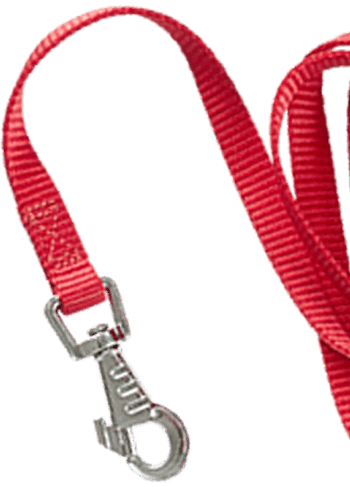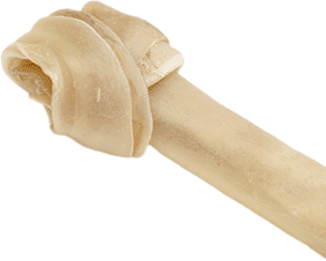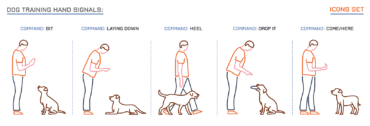


Labrador Retrievers are known as one of the smartest dogs for a good reason. They were practically bred for their intelligence!
In 19th-century Newfoundland, a group of fishermen wanted a dog who could fetch game for them. So they began breeding the local yet small St. John’s water dogs with the massive Newfoundland dogs we all know today.
The Labrador Retriever is a direct result of this crossover. The breed was immediately recognized as obedient, friendly, and easy to train. Fishermen also quickly found that Labradors weren’t only excellent workers, but also made wonderful companions.
So while you probably know that they’re a very intelligent breed, how smart are Labrador Retrievers exactly? Where do they rank compared to other breeds, and could you compare their intelligence to humans?
In this article, we’ll cover the ins and outs of measuring canine intelligence, how Labs ranked, and what you can do to test and improve your own dog’s smarts.
While practicing commands and playing puzzle games with your puppy is a great way to understand the way his mind works, there are better ways to assess a dog’s cognitive abilities. Canine psychologist Dr. Stanley Coren conducted a famous study to determine how to effectively measure a breed’s intelligence.
This canine test is based on specific criteria and trials conducted on thousands of dogs with the help of nearly 200 obedience judges. It became one of the most extensive animal-related studies ever done in the United States.
Here’s a look at the method and testing used in the study and what they reveal about dog intelligence.
As described in Dr. Coren’s book, The Intelligence of Dogs, the study found that three main types of intelligence can be used to measure a dog’s cognitive abilities: adaptive, instinctive, and working and obedience intelligence.
Together, these aspects helped researchers evaluate each breed’s problem-solving abilities, obedience, memory, social skills, and observation levels.
Dr. Coren’s study was published in 1994, with a second edition released in 2006. Over the years, it consisted of more than 100 dog breeds — including the Labrador Retriever — with evaluations by dozens of American Kennel Club and Canadian Kennel Club obedience trial judges.
The study used the following tests to rate canine intelligence:
Dr. Coren’s tests found that the most intelligent breeds need fewer repetitions to learn a new command. Also, the higher the success rate of commands on the first attempt, the smarter the breed is.
The intelligence results for the Labrador Retriever were positive — very positive, in fact! Labs consistently ranked as one of the top 10 brightest dogs, coming in as the seventh best-performing breed behind Border Collies, Poodles, German Shepherds, Golden Retrievers, Doberman Pinschers, and Shetland Sheepdogs.

The “brightest dogs” section only consists of ten breeds that could perform specific tasks:
On average, intelligent dog breeds can learn a new command with 25 to 40 repetitions, but findings showed that the Labrador Retriever is at least five times faster at learning new commands! It’s safe to say that Labradors are, in fact, extremely intelligent.
Dr. Coren also estimates that the average dog is more intelligent than most toddlers, with abilities close to human children aged 2 to 2 ½ years old. While there is no specific data on how Labradors rank compared to human intelligence, they likely have the intelligence capability of a 3- to 4-year-old child.
“They may not be Einsteins, but are sure closer to humans than we thought.”
Thanks to Dr. Coren’s extensive studies over the years, there is a consensus that Labrador Retrievers are among the most intelligent and obedient breeds in the world.
But even so, you might be wondering how you can measure your Lab’s intelligence. After all, no two dogs are the same. Luckily, you can learn where your pup ranks through research and test games.
If you plan to adopt a Labrador Retriever, you need to do so from a reputable, trusted breeder who can guarantee its genetics and lineage and provide paperwork on its overall health.

A good breeder:
Studies have found that 51% of a dog’s intelligence stems from genes, while 49% comes from environmental circumstances. So breeding does matter.
Working with a reputable breeder, you’re more likely to have an open line of communication, even after taking your pup home. Then, you can not only learn about the breeder’s experience but also gain insight into your puppy’s history.
You’ll be able to ask questions about his temperament, personality, and intelligence. You can also talk to the breeder about his parents and genealogical background.
The Dognition method is an interactive and fun way to test your dog’s intelligence. It was developed by Dr. Brian Hare, who has years of experience studying canines as a Duke University professor of Evolutionary Anthropology, the author of The Genius of Dogs, and host of the DogSmarts podcast.
Dognition consists of 20 tests created by a team of trainers, scientists, and behavioral specialists.

Dognition’s explanation of canine cognitive dimensions
You can perform the tests from Dognition at home with typical household items. Owners can record their dog’s progress online and follow how-to videos on conducting the tests.
Then, once you’ve completed the 20 games, you’ll receive a full, 10- to 15-page report carefully describing your dog’s intelligence and which profile your dog falls under.
Another simple way to test your dog’s intelligence is by teaching them new commands. Start with basic commands. Then your pup can move onto more complex areas down the line.
Here are some of the easiest basic commands you can start with:

The average dog requires approximately six corrections to understand a new command, while a brilliant dog will understand it after only two or three corrections.
Quick Tip: Don’t feel discouraged if you’re trying to work with an older dog! The phrase “you can’t teach an old dog new tricks” is not one that most dog owners would agree with.
Dogs of any age can learn new commands — all you need is patience, consistency, and the training method that your dog will respond to.
“It’s good to start training in a quiet, distraction-free room in the house,” says Susan Frank, a naturalist, educator, and founder of Raising Your Paws.
“If you’re going to be using clicker training as a method, you’d want a clicker handy, and ideally a pouch that fastens around your waist or clips to your belt loop to hold treats and/or toys close at hand. Have in mind the verbal cue word and hand signal you’re going to use to teach a particular skill.”
There are so many fun brain games that you can try at home with your puppy that help test all of its senses. Treat-based games are great for nose work, while puzzles are great for mental stimulation. Take your pick — or better yet, try them all and see what works best for your pup!

The “Which Cup?” Game: This game helps you determine how well your dog retains information. Present your pup with a treat and hide it under one of three cups within his view. Take a few seconds to distract your puppy by walking around the cups or offering him a different toy. Then allow him to find the treat on his own. If he finds the treat immediately, then his memory skills are impressive!
From the day you bring your Labrador home, you can begin working on improving his cognitive training through simple, daily activities and games, like:
And don’t forget, whether through training, going for a walk, or engaging in some toy time, frequently playing with your dog is the best way to improve your relationship with your Labrador!
Labrador Retrievers were always viewed as being among the most intelligent dogs in the world, and thanks to Dr. Coren’s studies on dog intelligence, we now know for sure that they are.
Labs rank as the seventh-most intelligent breed.
You can also test or improve your Labrador’s intelligence through a series of at-home tests and games. But one of the easiest ways to determine your Lab’s intelligence is ensuring that you get him from a trusted, reputable breeder.
A good breeder will have records of their dogs’ genealogy, health, and other traits, like friendliness and intelligence. So if you ever need to know how your Lab might rank as he gets older, check with your breeder first!
At Snowy Pines White Labs, our expert team specializes in providing the calmest, healthiest, and smartest Labrador Retrievers to families all around the United States. Learn more about Snowy Pines and our available Labrador puppies today.